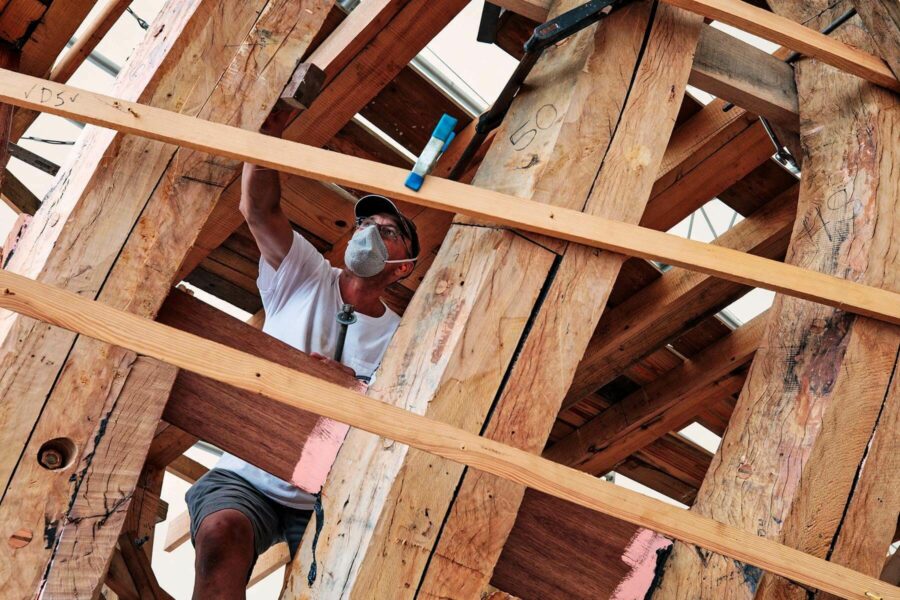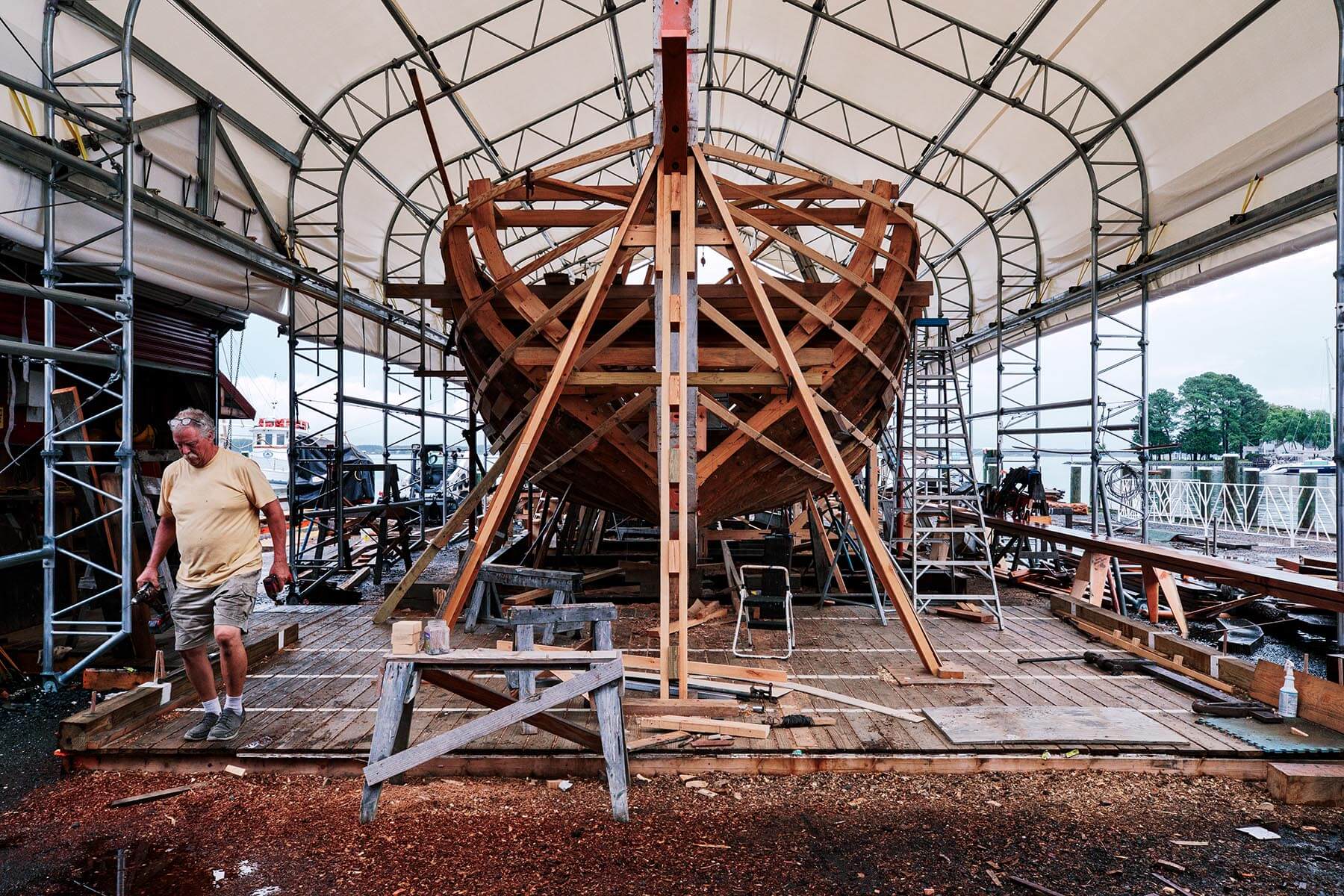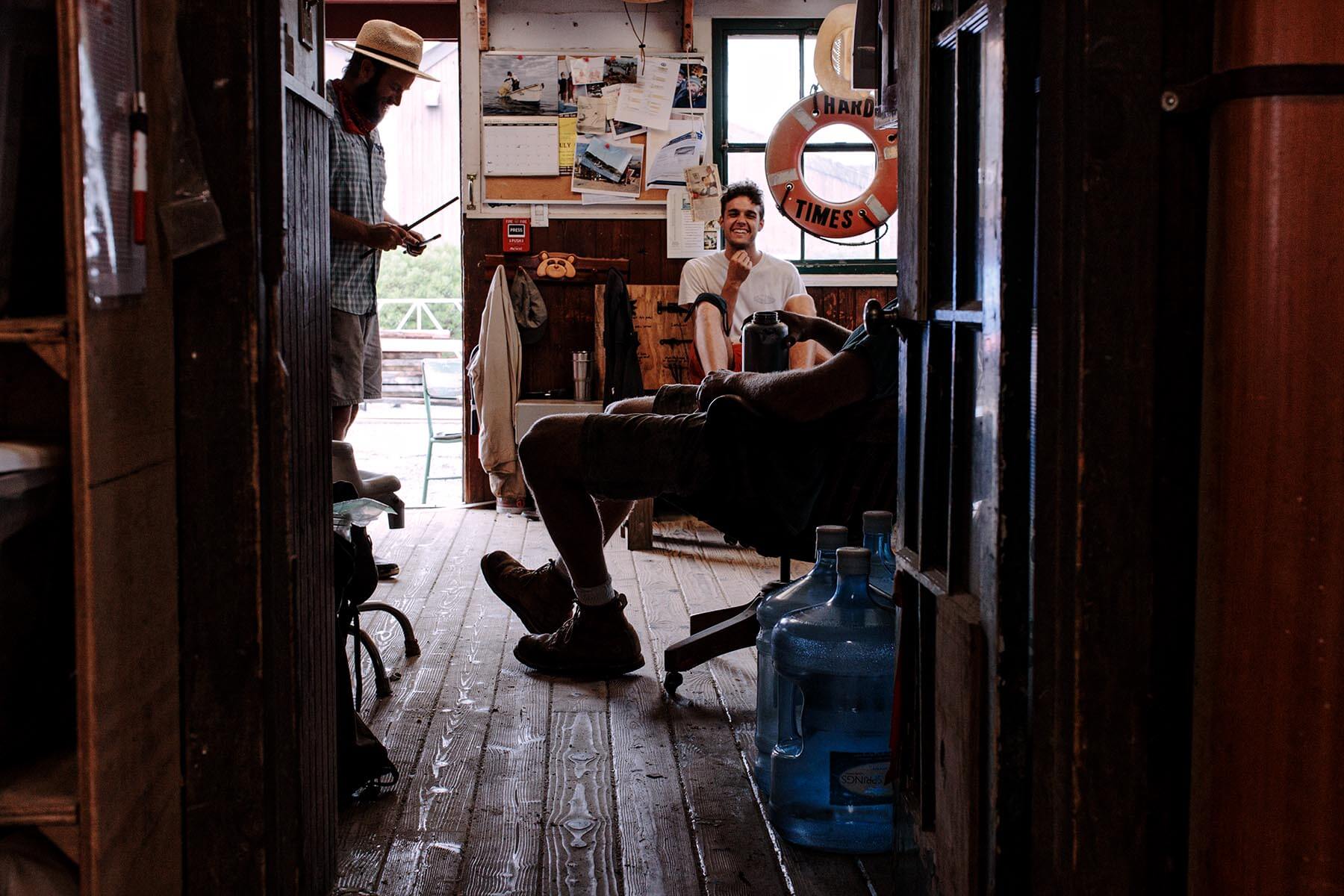The art of wooden boatbuilding is alive and well at the Chesapeake Bay Maritime Museum

Enter the working shipyard at the Chesapeake Bay Maritime Museum in St. Michael's, Md. and you will discover a community of shipwrights and apprentices of different generations working together through a shared appreciation for craftsmanship, resourcefulness and the smell of freshly planed wood. It is a rare sight to see in this day and age, but at the museum, the vintage construction is on full display as this team of boat builders creates a historically accurate replica of the 17th century, Maryland Dove.
Preserving our maritime heritage
By the mid-1960s, shifting market demands caused a decline in wooden boat building that originated with ships like the Dove. As recreational fiberglass boats became more popular, traditional boatyards gradually closed and building boats from wood became a dying art. Fortunately, craftspeople and nonprofit organizations such as the Chesapeake Bay Maritime Museum, have committed to preserving maritime heritage by restoring and rebuilding wooden boats. The new replica of the historic Maryland Dove stands out as one of the most ambitious and historically significant undertakings.

Sailing through history
In 1633, about 140 English colonists searching for religious freedom and economic opportunity voyaged across the Atlantic on two wooden ships, the Ark and the Dove. These travelers became the first colonists to settle in Maryland and established the state's first capital, St. Mary's City. In the following years, the Dove remained in Maryland for the colony's use, but after it failed to return to England during a trip in 1635, it was presumed to be lost at sea.
Recognizing the ship's historical and educational value, Maryland commissioned its first replica of the Maryland Dove in the 1970s. Without any plans or specific dimensions from the original vessel, naval architect, William Avery Baker, reproduced the design from limited historical descriptions while shipwright James B. Richardson, along with five assistants, carried out his vision. For years, the Maryland Dove attracted visitors and school programs in Historic St. Mary's City. But like any vintage vessel, it soon began to show its age—the lumber decayed and the bolts rusted. Deciding that it would be more cost-effective to start from scratch, Historic St. Mary's City commissioned the Chesapeake Bay Maritime Museum to build the new Dove and the state provided the funding.
A modern replica underway
Designed by naval architect Iver C. Frazen, the recent replica of the Maryland Dove incorporates historical and archeological findings that have only recently been discovered. The ship's design details, including its rigging, now more closely represent the original Dove. Shipwrights applying these new designs stick to traditional boatbuilding techniques as a matter of preference, saving power tools and machine use for efforts that require them.
People lucky enough to step aboard and sail on the Maryland Dove will get a small taste of what it was like on that voyage nearly 400 years ago. Shipwrights working on the boat are ensuring its longevity with boat building best practices such as sustainably sourcing tropical hardwoods that increase durability. With the project well underway, the estimated completion date is late 2021.

Carving out confidence and self-reliance
In a world full of modern conveniences, a project like the Maryland Dove shines a light on the value of patience and precision—qualities that are not easily replicated. Shipwrights working at the museum preserve essential skills while experiencing how their ancestors would have worked on such a project.
"The people who are involved in building this, the skills and knowledge that they are going to have when they leave, it's something that most people just don't have." states Joe Connor, lead shipwright on the Maryland Dove. "Like the knowledge of how wood fits into a ship and what trees belong where, how they dry and season, how they move and what moisture does to them."
Connor explains that the process of wooden boatbuilding requires continued problem solving, either by one's clever craftsmanship or through learning from other boatbuilders. Ultimately, the triumph of hard work and tenacity needed to solve these problems is what makes the craft so rewarding. It's the same motivation that likely inspired the Dove's original builders centuries ago.
"The work is our connection. It is our therapy. That is why we are all here."

Comments
That's really nice post. I appreciate your skills. Thanks for sharing.
A beautifully descriptive piece, thank you.
Very nicely written. Congratulations.
A truly well done article!
Thank you!
Your comment has been received. Before it can be published, the comment will be reviewed by our team to ensure it adheres with our rules of engagement.
Back to recent stories